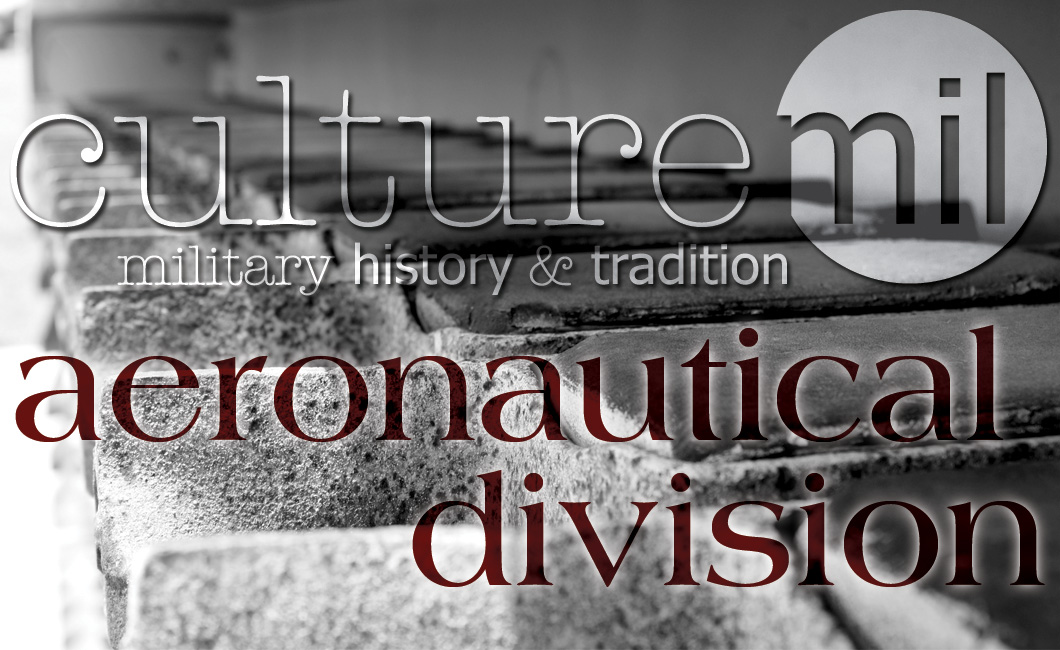- https://blog.uso.org/2014/09/18/7-air-force-facts-you-should-know-for-the-services-67th-birthday/
- https://www.nga.mil/About/History/NGAinHistory/Pages/AeronauticalDivision,USArmySignalCorps.aspx
- http://asc.army.mil/docs/pubs/alt/2010/4_OctNovDec/articles/43_U.S._Army_Signal_Corps,_150_Years_Old_and_Still_Breaking_New_Ground_201004.pdf
- http://www.army.mil/aviation/aircorps/
- http://www.armyaviationmuseum.org/index.php/heritage/origins-of-army-aviation
Written by Jenifer Chrisman on May 16, 2016.
This division will have charge of all matters pertaining to military ballooning, air machines, and all kindred subjects.
– Brigadier General James Allen
Before becoming their own branch of service on September 18, 1947, a birthday they share with the CIA, the United States Air Force started out as part of U.S. Army’s Signal Corps. The Corps founded the Aeronautical Division on August 1, 1907, by Office Memorandum No. 6 sent out by Brigadier General James Allen.
The Army’s interest in aeronautics began with the Wright brothers’ first flight on December 17, 1903. Although they weren’t convinced of the viability of commercial air travel, as the trip lasted only 59 seconds and reached a distance of 852 feet, their interest in the Wright brothers was renewed several years later.
At the behest of President Theodore Roosevelt, the U.S. Signal Corps advertised for open bids to contract and fly a plane. Based on performance specifications and design, the Wright brothers were the only responsible bid and, if they could meet the specifications in actual flight trials, the price of the airplane was settled at $25,000.
At the Aeronautical Division’s inception in August, the division had just three people, Captain Charles deForest Chandler (an experienced balloonist) and two enlisted men, but no airplane. The plane’s contract was awarded to Wilbur and Orville Wright (Wright Brothers, 1127 West Third Street, Dayton, OH) by Captain Charles S. Wallace, on behalf of the United States of America, on December 23, 1907.
In accordance with Signal Corps Specification No. 486 (two pages long), the plane needed to be able to carry two people a distance of 125 miles at a speed of at least 40 miles per hour and stay aloft for at least one hour. It also needed to be steerable, without difficulty, in all directions, land undamaged and be easily disassembled and transportable.
Flight trials began at Fort Myer in late summer of 1908. This first flight, however, was unsuccessful. The plane crashed, injuring pilot Orville Wright and causing fatal injuries to Army observer First Lieutenant Thomas Selfridge. The Aeronautical Division purchased an airship, Signal Corps Dirigible No. 1, from balloonist Thomas Baldwin as well in 1908.
Trials resumed at Fort Myer in 1909 and over a several week span the Wright brothers fulfilled each of the Signal Corps requirements, including an average speed of 42.5 miles per hour. In accordance with the contract’s 10-percent bonus for each mile over the stated 40, the brothers earned a $5,000 bonus, which brought the purchase price of the plane to $30,000.
In 1909, the Wright brothers presented an entirely new airplane to the Army, which they purchased and used from 1909-1910 to train test pilots. In 1911, after acquiring other aircraft, they donated Signal Corps No. 1, commonly known as the “Wright Military Flyer,” to the Smithsonian Institute. It was the world’s first military airplane.
The Aeronautical Division was renamed the Air Division on October 1, 1917 and was transferred from the Signal Corps to the Army Air Service in May of 1918.
General William Mitchell, along with other leaders of the Air Service, called out for an independent air force after World War I, claiming they should be a separate striking force. Although this was shot down by Congress and many Army leaders, the Army Air Service became a separate combat arm, giving them status equal to cavalry, infantry and artillery. On July 2, 1926, they were re-designated as the Army Air Corps. And in 1941, Army Air Corps merged with other air elements of the Army and became the Army Air Forces, making them co-equal with the Army Service Forces and Army Ground Forces.
The Army Air Forces were dissolved in 1947 when aviators and their advocates finally gained their independence as a separate branch and the United States Air Force was formed.
Sources:



